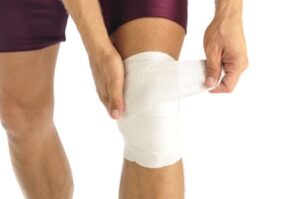 Dr. Trent J. Burrup is a Certified Chiropractic Extremity Practitioner (C.C.E.P.) and has been trained to treat multifaceted extremity problems both on and off the athletic field. “Extremities” means anything outside of the spine, for example ribs, knees, shoulders, feet and ankles, wrists and elbows. Some of the more common extremity conditions include carpal tunnel syndrome, frozen shoulder syndrome, plantar fasciitis, sprained joints, strained muscles, rotator cuff problems, bunions, arch pain, heel spurs, and separated shoulders.
Dr. Trent J. Burrup is a Certified Chiropractic Extremity Practitioner (C.C.E.P.) and has been trained to treat multifaceted extremity problems both on and off the athletic field. “Extremities” means anything outside of the spine, for example ribs, knees, shoulders, feet and ankles, wrists and elbows. Some of the more common extremity conditions include carpal tunnel syndrome, frozen shoulder syndrome, plantar fasciitis, sprained joints, strained muscles, rotator cuff problems, bunions, arch pain, heel spurs, and separated shoulders.
Athletics and Extremity Adjusting
In the athletic environment the body is often exerted beyond the normal scope of normal biomechanical function. Great athletes push through pain to win the game or better their time. It is in these intense moments when the body is very susceptible to injury. Joints in the body can be stressed or harmed and then ignored due to the nature of the competition. The lack of correction impairs the proper function of the joint and thus hurts the performance of the athlete. This occurs because when joints are put under extreme conditions, adjacent muscular activity is inhibited (the muscles around the joint are “turned off”). This decreases the athlete’s performance, makes him or her more susceptible to injury, and slows the healing time if an injury does occur. Extremity adjusting restores the proper position of strained joints, turns the muscles back “on”, and enhances overall athletic capabilities.
Why extremity Adjusting?
Many are familiar with the following lyrics of a popular children’s song, “The foot bone’s connected to the leg bone, the leg bone’s connected to the hip bone…” This children’s song illustrates a foundational biomechanical principle. If the bones in the body are connected, they will affect each other in a positive or negative way.
The term used to describe this relationship is the Kinetic Chain. If the feet are connected to the legs and the legs are connected to the back, then it is safe to conclude that a condition in the feet can affect the low back. If the shoulders are connected to the neck, then structural problems of the bones in the shoulder can directly affect neck pain. Because there is such an intimate relationship and influence of one joint to every other in the body, extremity adjusting is essential for providing quality health care.
